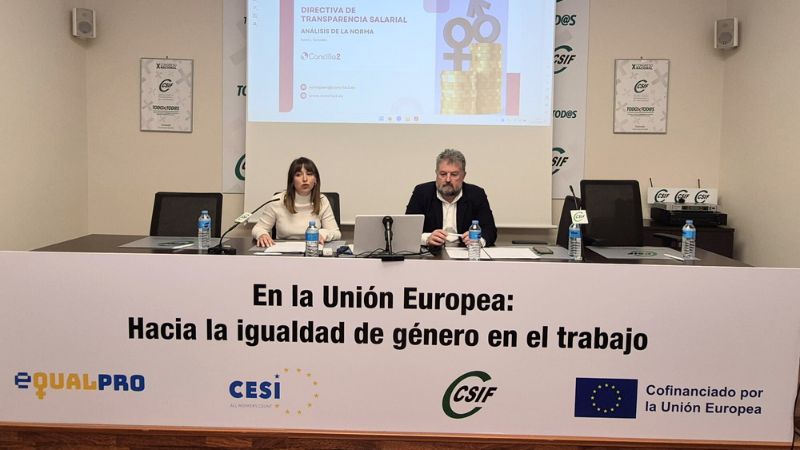

Dear members, colleagues, friends and partners of CESI,
In the last days and weeks, events of importance for social Europe took place. The digital platform of the Conference on the Future of Europe (COFOE) was launched on April 19th, the Porto declaration was adopted on May 8, and the COFOE itself was inaugurated on Europe Day, May 9th.
In Porto, the heads of states and governments reaffirmed their commitment to implement the European Pillar of Social Rights. The most popular answers to what a “more social EU” could be is “cohesion”, “solidarity” or “upwards convergence”, yet often the details of what this might concretely entail, or not, remain blurred.

To remind you, the Pillar establishes 20 principles which, when taken by the letter, would confer “rights”: “Everyone shall have the right to…, workers shall have the right to…, parents and carers shall have the right to…, children shall have the right to…”.
In the Porto Declaration, the European Council declared that “the European Pillar of Social Rights is a fundamental element of the recovery and its implementation will strengthen the Union’s drive towards a digital, green and fair transition. The social dimension, social dialogue and the active involvement of social partners have always been at the core of a highly competitive social market economy. Our commitment to unity and solidarity also means ensuring equal opportunities for all and that no one is left behind.”
However, social policy is a field of multi-layered competence, the Pillar is not binding (it is a solemn proclamation, meaning a declaration of intent), and the rights listed in it are
not directly enforceable for trade unions, workers or citizens. By the same token, the addressees are the Member States, the EU, private or public social protection schemes, the social partners at all levels and in all sectors, employers, health care providers, local governments, public utilities providers etc.
Accordingly, the heads of states and governments also declared in Porto their determination “to continue deepening the implementation of the European Pillar of Social Rights at EU and national level, with due regard for respective competences and the principles of subsidiarity and proportionality.”
And they added: “The Action Plan presented by the Commission on 4 March 2021 provides useful guidance for the implementation of the European Pillar of Social Rights including in the areas of employment, skills, and social protection.” ‘Useful guidance’ says it all. Nothing could be less binding.
The question what the EPSR actually is, is more than justified. It is, that much is clear, a declaration of intent. But is it, as some call it, the “most comprehensive social package ever designed”, or is it rather, as critics complained in the past, more of a placebo that generates positive psychological effects without concrete “active ingredients”?
The implementation of the Pillar needs ingredients: awareness, laws, guidelines, and, not least, money. The EU has already come forward with “75 initiatives at different levels”, Commission Vice-President Valdis Dombrovskis commented last Friday; among them legislative and non-legislative initiatives, such as for instance an adjusted European Semester, putting “social policy at the centre of EU policy making”. And if we speak ‘social’ let´s not forget the recovery instrument NextGenerationEU with the €672.5-billion-heavy Recovery and Resilience Facility at its heart. So yes, there is reason to be sceptical – but maybe more to be optimistic.
Now, and this is the general feeling at EU level, the ball lies with the Member States. If the Pillar does not have a concrete impact on the lives of citizens and workers, we will never know if it is the most comprehensive package ever designed – or a mere placebo. The Member States now need to implement and complement EU legislation and spend the funds under the Facility with clear social targets.
In this regard, the recently presented Action Plan may give guidance. It proposes manifold actions at different levels and defines three headline targets which should be achieved by 2030:
1. At least 78% of people aged 20 to 64 should be in employment.
2. At least 60% of all adults should participate in training every year.
3. The number of people at risk of poverty or social exclusion should be reduced by at least 15 million.
Of course, the EU has always been good in establishing multiannual targets and strategies, such as (previously) the Lisbon Agenda or the EU 2020 Strategy, (and
just recently) the Digital Strategy or the European Green Deal. The question is whether these targets can and will be reached.
Will the Pillar and the Action Plan make a difference? Will they become the ‘most comprehensive social package(s) ever designed’ or will they only reveal another ‘lame duck’?
At CESI, we published our 10 most important demands for a successful implementation of the Pillar of Social Rights in advance of the Porto Summit. And I believe the answer lies with all of us. With us as citizens, workers, politicians, as media and social society representatives, and, not least, as social partners and trade unions.

Image Gallery
A social EU? | Editorial of the Secretary-General Klaus Heeger
Related videos
Similar Posts
Get in touch
with us
Confédération Européenne des Syndicats Indépendants (CESI)
Contact form
Stay up to date
Don’t miss a thing and subscribe to our newsletter
Subscribe now and receive newsletters and much more!




